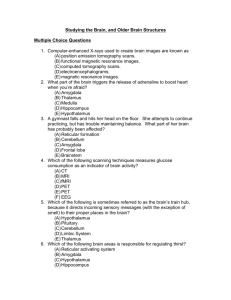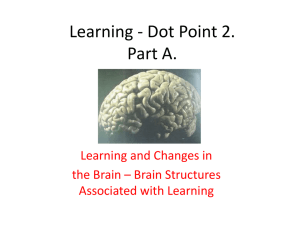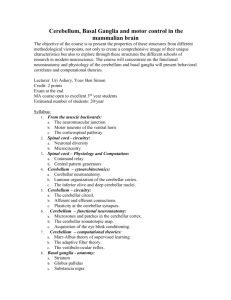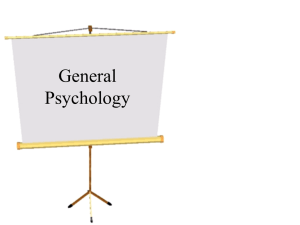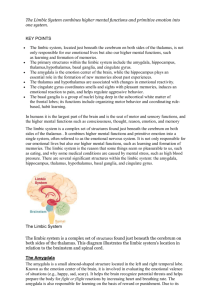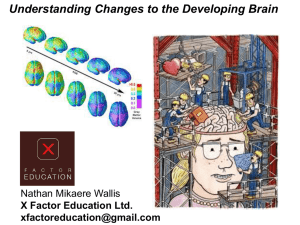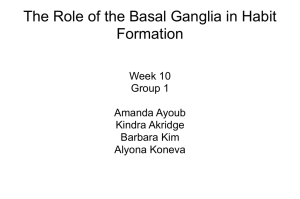Developing Brain and Marijuana Use
advertisement
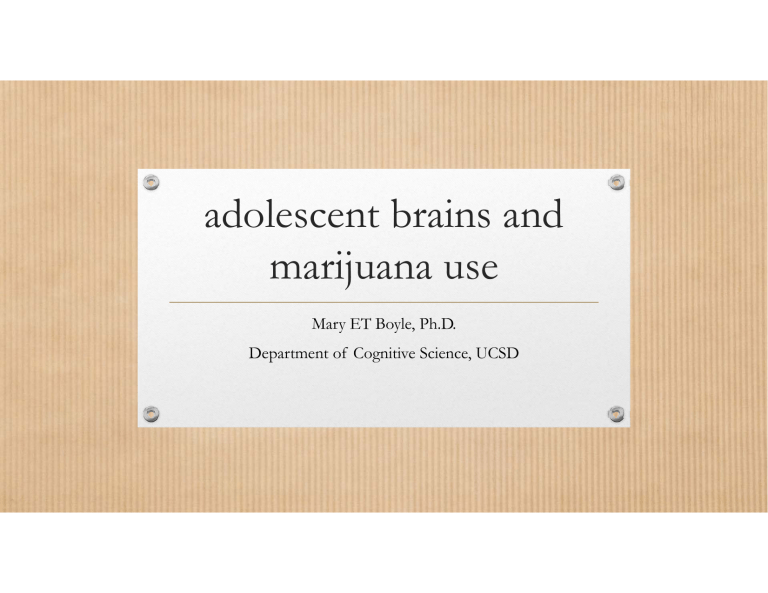
adolescent brains and marijuana use Mary ET Boyle, Ph.D. Department of Cognitive Science, UCSD Adolescence is a time of enormous opportunity and of enormous risk Dr. Jay Giedd Tough Subject politics shoulds fear crime in this talk what is marijuana? the brain on marijuana is the teen brain special? current research teenage brains are really different than… …8 year old brains… MRI structural & physiological imaging … and adult brains. Longitudinal studies from 3 – 30 years old Giedd, J. N. (2008) Journal of Adolescent Health 42, 335–343 what is marijuana? cannabis sativa plant leaves, stems flowers delta-9tetrahydrocannabi nol = Δ9-THC main psychoactive ingredient Δ9-THC is the main psychoactive ingredient Δ9-THC activates cannabinoid1 (CB1) receptor in the brain. CB1 is expressed at high levels in many brain areas Two endogenous brain lipids have been identified as CB1 ligands CB1 receptor endocannabinoids – ligands for CB1 N-arachidonylethanolamine anandamide (AEA) 2-arachidonoylglycerol arachidonate-derived neuroactive lipids 2-AG what areas of the brain process marijuana? hypothalamus cortex basal ganglia hippocampus ventral striatum amygdala cerebellum brainstem hormones appetite hypothalamus cortex basal ganglia hippocampus circadian rhythms sexual behavior ventral striatum amygdala brainstem cerebellum motor controlled planning initiation of actions hypothalamus cortex basal ganglia hippocampus ventral striatum termination of actions habit pathway amygdala brainstem cerebellum prediction hypothalamus cortex basal ganglia reward hippocampus ventral striatum amygdala brainstem addiction? cerebellum anxiety hypothalamus cortex basal ganglia emotion hippocampus ventral striatum amygdala brainstem fear cerebellum vomiting reflex hypothalamus cortex basal ganglia pain sensation hippocampus ventral striatum amygdala brainstem sympathetic nervous system reactions cerebellum higher cognitive functions hypothalamus cortex basal ganglia hippocampus ventral striatum amygdala brainstem sensation perception cerebellum judgment and pleasure memory formation hypothalamus cortex basal ganglia ventral striatum hippocampus amygdala brainstem learning: facts cerebellum sequences places motor control hypothalamus cortex basal ganglia coordination hippocampus ventral striatum amygdala brainstem cerebellum motor learning doubles risk of car accident - DUI what is marijuana? the brain on marijuana is the teen brain special? current research “Neuroscience research has shown that while teenagers' feet may be done growing by the end of high school, their brains are not.” Rachel Tompa – www.berkeley.edu white matter gray matter increase during adolescence increases volume until early teens increase into 50’s (frontal, temporal) decreases until old age corpus callosum greatest increase during adolescence Giedd, J. N. (2008) Journal of Adolescent Health 42, 335–343 is it the addition problem? caffeine adderall video games facebook gambling food damage to ability to learn argument? lack of sleep caffeine drinks poor diet stress & anxiety Hill, C., et al. Arch. Dis. Child. 2007;92;637-643; Blankston, K. L. et al, Pediatrics in Review 2013;34;55 is it really a gateway drug? Most cocaine users started with marijuana Brain is changed more likely to use other drugs Young age + regular use Genetic predisposition Hall, W. D. and Lynskey, M. Drug and Alcohol Review, (January 2005), 24, 39 – 48 teen brain … is different puberty changes everything do not have reasoning as adults mood swings, slammed doors, rash decisions brain is to blame – and the hormones prefrontal cortex –involved in complex decision making Prefrontal cortex is one of the last parts of the brain to mature Testosterone increases aggression and irritability. Estrogen enlarges the hippocampus more in girls Giedd, J. N. (2008) Journal of Adolescent Health 42, 335–343 teen underdeveloped decision processing affects everything Amygdala increases in size, which causes the teen’s emotional centers to be in hyper-drive all decisions risk taking decisions – teens have higher levels of dopamine too lack of impulse control – prefrontal and serotonin teens prefrontal cortex is similar to a damaged adult’s prefrontal cortex moral decision knowledge and doing disconnect emotion control Giedd, J. N. (2008) Journal of Adolescent Health 42, 335–343 what is marijuana? the brain on marijuana is the teen brain special? current research How do endocannibinoids affect synaptic transmission? Voltagedependent Ca++ channels open & Ca++ enters the terminal. post-synaptic Xmtr is released from synaptic vesicle pre-synaptic Xmtr binds to receptor and the channel opens. Post-synaptic depolarization opens voltagedependent Ca++ channels which activates endocannabionid synthesis. Ca++ endocannabinoid signaling is critical during development Brain maturation continues through adolescence. infancy childhood adolescence 12-17 years old adulthood robust neurodevelopment brain maturation continues hippocampus prefrontal cortex synaptic pruning receptor distribution volumetric growth myelination CB1 receptors increase dramatically from infancy to young adulthood. CB1 receptor expression changes over time hypothalamus cortex basal ganglia hippocampus dramatic increase during development ventral striatum amygdala cerebellum brainstem frontal cortex, striatum & hippocampus Mato et al., 2003 endocannabinoid ligand expression changes during adolescence. AEA and 2-AG expression changes hypothalamus cortex basal ganglia hippocampus AEA – onset of puberty for females in hypothalamus ventral striatum amygdala cerebellum brainstem 2-AG expression changes in PFC & N. Accumbens disruption of normative endocannabinoid signalling during adolescence may have long-standing consequences on adult brain function Mato et al., 2003 Rubino, T and Parolaro, D (2008) Molecular and Cellular Endocrinology 286S S108–S113 Schizophrenia is a devastating illness. 1% of world population emerges: late adolescence or early adulthood most experience a lifetime of disability high emotional family burden real-faker.deviantart.com 10% eventually commit suicide Lewis, DA, Hashimoto, T and Volk, DW (2005) Nature Reviews Neuroscience 6:312-324. voices distinct from one’s own thoughts Psychosis: distortions in inferential thinking perceptual disturbances auditory hallucinations hallucinations delusions -fixed, false beliefs that are firmly held in the face of contradictory evidence Lewis, DA, Hashimoto, T and Volk, DW (2005) Nature Reviews Neuroscience 6:312-324. Risk of developing schizophrenia risk is directly proportional to being genetically related to someone affected by schizophrenia degree of risk conferred for each susceptibility gene is small twin studies: only 50% is accounted for by genes – the rest is environmental risk environmental events increase risk environmental events during development advanced paternal age at time of conception frequent cannabis use during adolescence environmental events during development frequent cannabis use during adolescence genetics + environment advanced paternal age at time of conception Schizophrenia is more than psychosis. impairments disturbances in brain function social perception inferential thinking language (fluency & production) expression of emotion capacity for pleasure volition attention occupational Does cannabis use increase the risk of schizophrenia? Rubino, T and Parolaro, D (2008) Molecular and Cellular Endocrinology 286S S108–S113 Lewis, DA, Hashimoto, T and Volk, DW (2005) Nature Reviews Neuroscience 6:312-324. Tanaka, S. (2008) BMC Neuroscience 9:41 Tanaka, S. (2008) BMC Neuroscience 9:41 Somogyi, P. & Klausberger, T. (2005) J. Physiol 562. The cortex encodes, stores & combines information about the external and internal environment in terms of rhythmic activity. Internal info rhythmic activity Somogyi, P. & Klausberger, T. (2005) J. Physiol 562. a single inhibitory pulse will synchronize two pyramidal cells basket cell resets pyramical cell firing Somogyi, P. & Klausberger, T. (2005) J. Physiol 562. IPSPs in theta frequency caused tighter synchrony so – does cannabis use during adolescence increase the risk of Sx? Malone, D. T., et al (2010) British Journal of Pharmacology, 160, 511–522 Malone, D. T., et al (2010) British Journal of Pharmacology, 160, 511–522 what now? hypothalamus cortex basal ganglia hippocampus ventral striatum amygdala cerebellum brainstem
